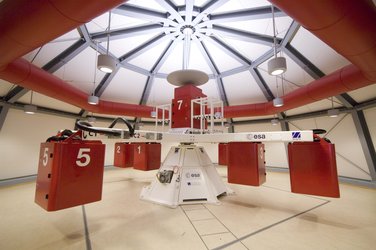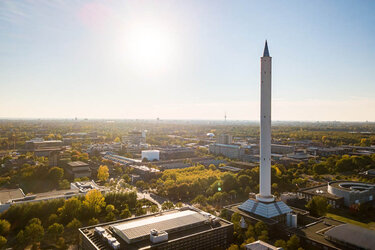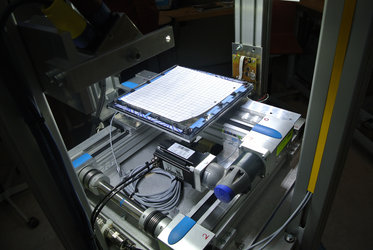Examples of past experiments
| |
| |
Physics of plasmas and solid/liquid dust particles
It is widely accepted that planetesimals, as precursors to planets, form during a growth process in which two dusty bodies collide and form a larger one. As bodies grow to several cm in size, collision velocities can reach up to several tens of m/s. A fundamental problem for planet formation is to explain how growth can proceed at these high impact velocities. The objective of this experiment was to investigate the slow ejection of large amounts of dust by porous targets. This phenomenon is attributed to elastic waves generated by a dust impact and so it would have a very significant effect on current growth models. What amount of material is ejected? What size of fragments is ejected? What happens at the bottom of the target? These are basic questions that can only be answered under microgravity conditions. (G. Wurm, O. Krauß, G. Paraskov. (2005). Institut für Planetologie, University of Münster. “EJECT: Dust Ejection by Elastic Waves during Medium Velocity Dust Impacts into Dust Targets”. ESA ERASMUS Experiment Archive.)
![]()

Reaction of the equilibrium organ of fish to changes of gravity
In order to investigate a hypothesis for organic causes of sea sickness, infant fish were exposed to microgravity, each in an aquarium of its own. The fish’s motion was observed through video cameras. The inner ear of those fish which showed an abnormal response to the absence of gravity was examined after the drop. Drop and deceleration caused no harm to the fish. (Prof. Reinhard Hilbig, University Hohenheim, rhilbig @u ni-hohenheim.de)
![]()
Soot formation in non-premixed gaseous flames
In a diffusion flame, e.g. a candle flame, the soot layer is formed on the fuel-rich side of the reaction zone. In normal gravity, such a flame produces only small amounts of soot, since the soot, once formed, has to penetrate the closed reaction zone through the tip of the flame where most of it gets burned. In microgravity the flame’s tip opens, releasing most of the unburned soot and enabling soot growth. Besides aiming for a better fundamental understanding of soot formation and growth, this research is closely correlated to the investigation of functional nanoparticles formed through combustion pyrolysis. (Prof. Stefan Will, Technische Thermodynamik, University of Bremen, will @ uni-bremen.de)
![]()

Capillary transport of liquids
Due to wetting behaviour, liquids rise in a capillary until equilibrium between the wetting forces and the hydrostatic pressure of the liquid column. In microgravity, capillaries can thus serve as a pump-free liquid transport. In addition, open capillaries (parallel plates) are already sufficient and this experiment was designed to find out the axial flow rates and radial accelerations at which an open capillary may hold the liquid. (Dr. Michael Dreyer, Centre of Applied Space Technology and Microgravity, Michael.Dreyer @ zarm.uni-bremen.de)
![]()
Many other examples of experiments can be found in the ERASMUS Experiment Archive.
Previous Drop Your Thesis! experiments can be found in the meet the team pages.
Please note that the conditions detailed above are subject to change without prior notice.







